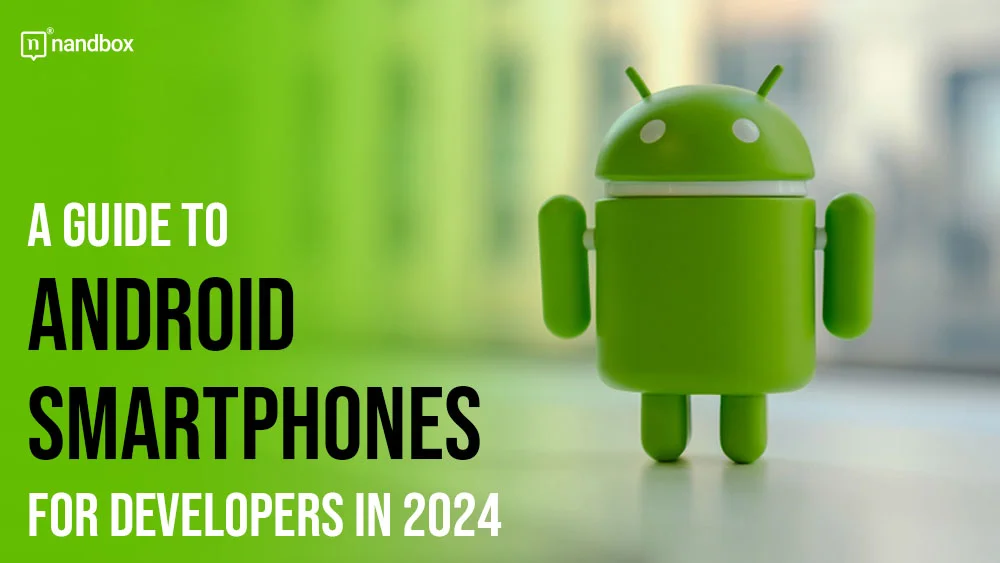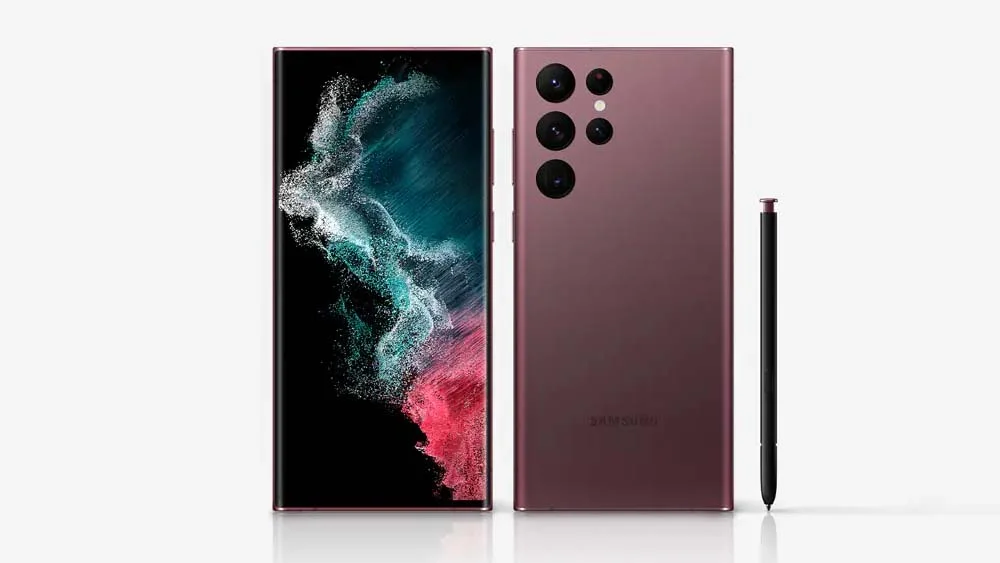Choosing the right Android smartphone in 2024 is something that is of great importance for developers. Ones who aim to create and test applications effectively. With Android’s strong and powerful market presence and diverse range of devices, it’s essential to select Android smartphones that align with your development needs. But how can you do so with all the choices that you have on the market? I know that such a vast pool of innovation can be overwhelming. That is why I am here today to help all developers choose the best smartphone that will meet their needs in 2024.
Key factors to consider include hardware specifications like RAM, processor speed, and storage capacity. These not-so-little factors directly impact the device’s performance during development. Additionally, screen size and resolution are also important, given the need to test apps across various displays. Moreover, battery life is vital for extended testing sessions, ensuring you can work without constant recharges.
Developers should also consider the device’s compatibility with the latest Android operating system versions. That is to always stay current with all new updates. Whether opting for high-end, mid-range, or budget devices, each has its place in the development process. This guide will help you balance your needs with your budget and requirements all together.
Tips and Considerations For Developers When Choosing Best Android Smartphones
The very first question that you should begin with is as follows: What should you prioritize first when you’re choosing a smartphone? First, think about hardware specifications. How much RAM does the device have? How much will be enough for your needs? Is the processor powerful enough to handle intensive tasks? Tasks like running multiple apps simultaneously or testing complex features? What about the device’s storage? Because that is another key factor indeed. Do you have enough space for large files, multiple app versions, and data-heavy simulations? Check these questions out and you’ll find yourself starting an automatic option filtration process.
Next, consider screen size and resolution. Does the device allow you to test your app on various displays, ensuring it looks and functions well on different screens? With Android’s diverse ecosystem, this is such an important remark to take into consideration for delivering a consistent user experience. Battery life is another critical consideration. Can your device endure long testing sessions without needing frequent recharges? A strong battery means more uninterrupted work time. This is something that will help you boost your own rate of productivity. Below, I will help you through the best recommendations for smartphones that are made for developers and can actually endure a developer’s heavy duty work.
Best Options for Developers: Premium Devices for Comprehensive Testing
For developers seeking the best tools for comprehensive testing, high-end Android smartphones should be your go-to option. These devices offer top-of-the-line hardware and software capabilities. That is, to ensure that your apps perform in a seamless way across even the most demanding scenarios. Ready to dive in?
Samsung Galaxy S24 Ultra
Let’s begin with the Samsung Galaxy S24 Ultra. This is an excellent example of a premium device suited for developers. With its powerful Snapdragon 8 Gen 3 processor, up to 16GB of RAM, and a magnificent 120Hz AMOLED display, this phone can handle intensive tasks for sure. These tasks can include 3D graphics rendering and multitasking. Yes, COD Mobile players, you’ll love this phone! The S24 Ultra also features a versatile camera system, which is invaluable for developers working on augmented reality (AR). They could also be working on a camera-based app for example. Moreover, Samsung’s One UI, layered over Android, provides a smooth experience for testing the latest Android features and customizations.
Google Pixel 9
Another top phone that lies within the premium category is the Google Pixel 9 Pro. The phone is expected to have one of the top and most pure Android experiences. Like it’s successor, the Pixel 8 Pro. It offers a clean and fast environment for app development. It comes with Google’s Tensor G4 chip, which is optimized for AI and machine learning tasks. Which, if you ask me, is great and perfect for developers working on AI-driven apps. Additionally, it will have complete integration with Gemini and other AI solutions that will revolutionize design.
The Pixel 9 Pro also boasts a brilliant LTPO OLED display with excellent color accuracy. Which makes it ideal for testing apps that require precise visual feedback. The added advantage of being first in line for Android updates ensures that developers can test their applications on the latest Android versions as soon as they’re released. This is something that will allow them to stay ahead of the game in the developer market.
Mid-Range Devices: Balancing Performance and Cost
For developers who take budget into consideration and who wish to have a balance between performance and cost, mid-range Android smartphones provide an excellent middle ground. The OnePlus 12 is a phone that stands out in this category, offering flagship-level performance at a more accessible price point. The OnePlus 12 can easily handle most development tasks thanks to its Snapdragon 8+ Gen 2 processor and up to 12GB of RAM.
Its 120Hz fluid aMOLED display provides a smooth visual experience. This is very important for testing the user interface and animations. The device’s OxygenOS, based on Android, offers a near-stock experience, ensuring minimal interference with the development process. This makes the OnePlus 12 a great choice for developers who are looking to test their apps across a wide range of use cases without their wallets screaming in pain from the emptiness that they may feel.
Google Pixel 8a
Another great mid-range option is the Google Pixel 8a. This device, while more affordable than the Pixel 8 Pro, still offers a robust development environment. Equipped with the same Tensor G3 chip found in the flagship model, the Pixel 8a ensures that developers can work on AI and machine learning projects without compromising on performance.
The Pixel 8a also benefits from Google’s timely Android updates. A Google phone has its own perks with Google for sure, yeah? This actually makes it a reliable choice for developers who need to stay up-to-date with the latest features and security patches. Its compact size and lightweight design make it an ideal device for on-the-go testing. Moreover, the Google Pixel 8a phone has the best phone speed for file transfers and apk testing as well. Seriously, what’s not to like here?
Budget Smartphones: Affordable Options for Entry-Level Development
For entry-level developers or those working with limited resources, budget Android smartphones offer an affordable entry point into app development. The Samsung Galaxy A54 can be a good starter for you in this category. While more affordable than its Galaxy S-series counterparts, the A54 still packs a punch with its Exynos 1380 processor and 6GB of RAM.
This device is capable of handling basic development tasks and is particularly well-suited for testing apps designed for lower-end hardware. It simply ensures that your applications run smoothly across a wider range of devices. The Galaxy A54 also features a bright and vibrant Super AMOLED display, making it a solid choice for developers focused on creating visually appealing apps without investing in a flagship device. The downside of this phone is that it doesn’t hold the best battery life but with entry-level development, I don’t think that would be a major problem here.
Motorola’s Moto G Power
Another excellent budget option is the Motorola Moto G Power 2024. This device is known for its exceptional battery life, which can be a significant advantage for developers who need to run long testing sessions without frequent recharges. The Moto G Power is equipped with a Snapdragon 680 processor and 4GB of RAM, offering adequate performance for basic app development.
Its near-stock Android experience provides a clean and straightforward platform for testing apps, free from the bloatware that often accompanies budget devices. This makes the Moto G Power an ideal choice for developers looking to start their journey in Android development without a significant upfront investment.
Wrapping It Up!
Developers are always seeking the best technology that they can use to enhance themselves and tailor to their needs. Since developers know more about technology than any other human being, this guide was created for them to understand which Android smartphones they should buy that will help meet their needs and secure the perfect user experience for them.
Whether they opt for Samsung’s S series or A54, Google’s Pixel, or One Plus, their choice will always depend on their needs and preferences. However, this concludes our guide for today with a summary of the best 2024 smartphones for developers. Technology is advancing each and every day of our lives and we must do what we can to ensure that we leverage it’s power to our advantage and benefit from what all new smartphones have to offer us in 2024!




